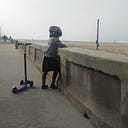Caltrans in 4 Minutes
This article discusses the history and current operations of Caltrans, with a slight focus on the Los Angeles area towards the conclusion. It is part of a series that provides short guides to different governmental transportation organizations in LA and CA.
Formal Name: California Department of Transportation
Nickname: Caltrans
Year Formed: 1972
Budget: $14.7 billion (to be spent throughout the state)
Staff: 20,600
What Caltrans Does: The primary duty of Caltrans is to maintain freeways and highways. They do other things as well, but this is their bread and butter.
State law leaves the oversight of local roads to local jurisdictions, but Caltrans controls the highways and freeways that both link and run through our cities.
It’s helpful to understand these two types of roads:
- Freeways (like the 101 or the 5 in Los Angeles) are large multi-lane roads that are “free” from all other crossing traffic and adjacent land uses. They generally require long ramps to access them.
- Highways (like the Pacific Coast Highway) are also large multi-lane roads, but they are crossed by other roads, have traffic signals, and can be lined with adjacent land-uses like office buildings, stores, and housing.
History
In the year 1972, during his first stint as governor, Jerry Brown consolidated the state’s powerful road-building department (the CA Division of Highways) with other transportation-related departments to form the official “California Department of Transportation.”
But Caltrans as an organization has roots that go much further back. The state’s road-building unit goes all the way back to the the California “Department of Highways” that was formed in 1897. This Highways group would operate within the state’s Department of Public Works for decades, eventually becoming the California “Division of Highways.” (The historian Matthew Roth provides rich detail of this Caltrans history here.) In the decades following WWII, the California Division of Highways became a workhorse that incorporated freeways into its portfolio and began a massive building program that profoundly influenced the history of urban development in the California’s major cities.
How California and the Los Angeles region went “all in” on its freeways is a more complex story than will be told here. For those interested, I recommend reading this article on the rise of freeway program after WWII, and then this article on its decline in the 1970's.
Current Operations
As of 2020, Caltrans no longer builds many new freeways. But it does shoulder the huge task of maintaining the extensive existing system of freeways and highways throughout the state.
Caltrans still occasionally adds freeway lanes at congested parts of the system, like the recent addition of a lane to the 405 through the Sepulveda Pass in Los Angeles. Indeed, it does this despite well-documented research showing that such high-cost lane additions do little to alleviate traffic congestion.
About 2/3 of the state’s entire $23 billion transportation budget goes to Caltrans. And a very large portion of the Caltrans budget comes from fuel taxes and commercial vehicle weight fees.
Every time ordinary people and truckers fill up at the pump, a portion of the money goes pays for roads. A car’s average fill-up of about 12 gallons sends roughly $7 to the state, and most of that money gets funneled to Caltrans and local cities to pay for road maintenance.
Programs
Caltrans implements two large and significant programs:
(1) The State Highway Operation and Protection Program (SHOPP), which keeps freeways and highways in good condition. The SHOPP program budget was $3.8 billion in FY 2017–18.
(2) The State Transportation Improvement Program (STIP), which in theory “improves roads” in a variety of ways but in practice usually adds roadway capacity in order to accommodate more cars. The STIP program budget was $325 million in FY 2017–18.
The fact that the SHOPP “repair” budget is more than ten times greater than the STIP “improvement” budget reflects the fact that these days Caltrans is primarily about taking care of freeways and highways rather than building new ones.
District 7
Caltrans is based in the state capital of Sacramento, but they split the state into 13 districts. (See map at left.) Los Angeles is in District 7, which also includes Ventura County.
District 7 is the largest Caltrans District in terms of population, containing 25% of California’s people.
The district spends between $2.5 and 3 billion on highway and freeway construction every year and employs almost 1,500 employees.
You can find the headquarters of Caltrans District 7 at this huge building in downtown LA across the street from Los Angeles City Hall.
Go here for the main page of this transportation series.
